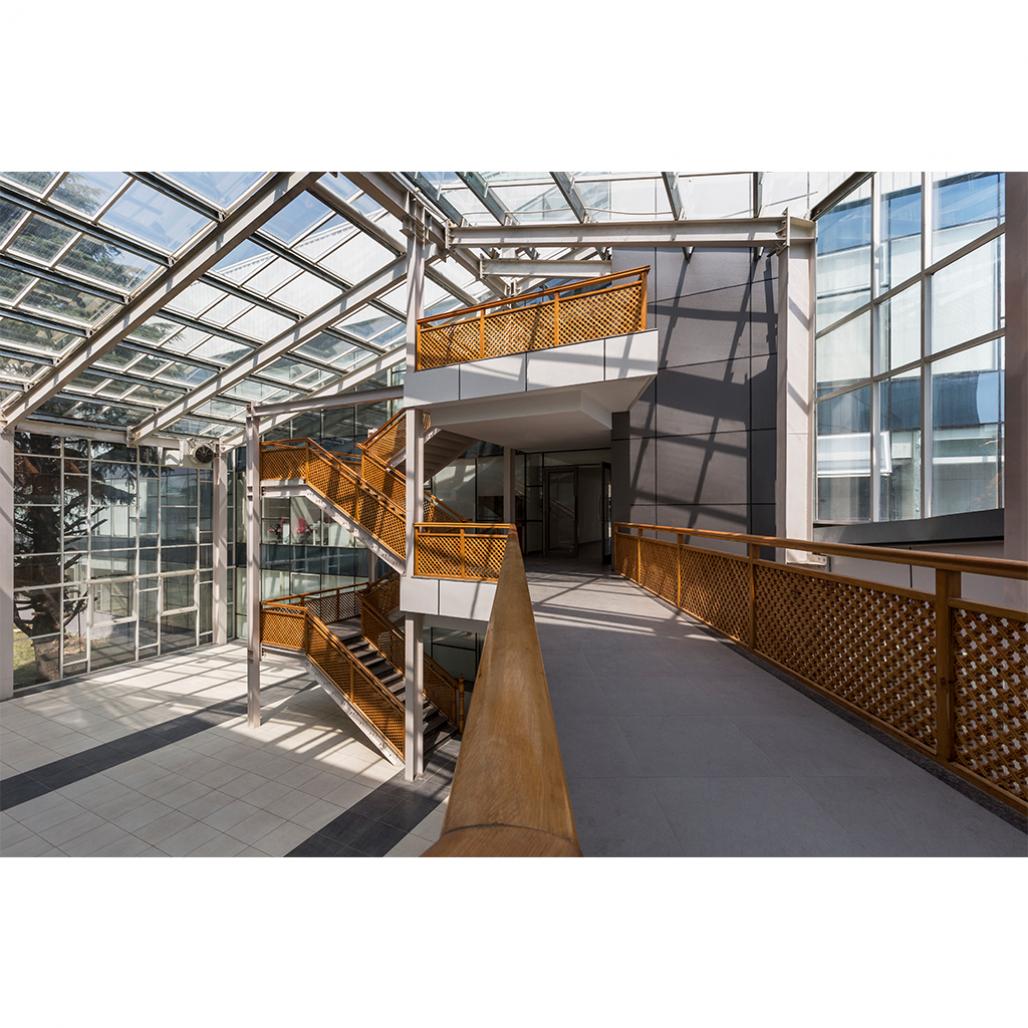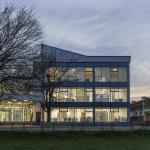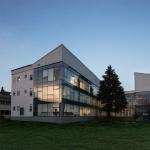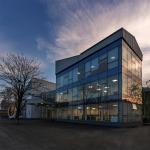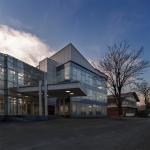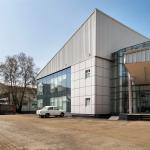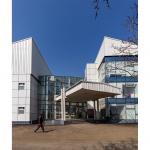The New Administration facility for the University of Kashmir in Hazratbal, Srinagar, is a showcase of the openness, inventiveness and contemporary nature of the University, while respecting the sense of place, culture and environment.
The building is designed for spatial and material optimization, energy efficiency, human interaction, comfort and the celebration of traditional timber design in a contemporary context.
The building is located in the main campus, at Hazratbal, adjacent to the existing Vice Chancellors secretariat. It overlooks the cricket ground, and onwards to a fabulous view of the Dal Lake, and Zabarwan hills beyond.
An existing Fir tree provided the impetus to a “central” space.
The building functions are developed in two distinct blocks, defined by the level of security, and planned around a central atrium space. The tree forms a focal point from the entrance, through the atrium space, with interconnecting bridges flying through the atrium space.
This atrium becomes an “all weather” space for gatherings, chance meetings, discussions and setting up of temporary exhibitions.
The two blocks on East and West form the bulk of the offices. All the offices are naturally lit. There is extensive usage of glass, and colour, to create well defined, and yet visible “departments”. Workstations and cabins are planned to encourage interactions and collaborative working.
Despite being a difficult to reach place, with its own peculiarities, the building was successfully built, using local contractor teams, by the use of BIM.
Since all the building design details, elements and components were modeled and coordinated using BIM, the contractors were able to prep fabricate and erect the components without running into fouling and difficulties. The 3D imagery and live models allowed them to “walk” through the building and understand each component, including the erection sequence for a well oiled project schedule.
Photography Credits: Suryan//Dang
2018
2019
Each zone or department is independently climate controlled, using all weather VRV air-conditioning. The circuits of the glare free LED lighting, are designed to maximise the use of natural lighting. So lights close to the windows and glazing can be switched off separately, while some interior lights may continue to be used.
The air-conditioning system also has enthalpy control, so when the outdoor conditions are pleasant, the compressors shut down and only fresh air is circulated through the building. Even in very warm and cold conditions, adequate fresh air is provided to ensure healthy indoor conditions.
The central atrium also has heat sensors and mechanical ventilation fans. These switch on to flush warm air, in case it rises above a set point. The atrium is also lit with high efficiency, high bay lighting, to allow its usage after sunset.
The façade is made from glass wool insulated panels, and high performance glass.
The façade allows light to enter but controls heat entry as well as heating loss during winter.
All service areas such as pantries and toilets, that are near the façade, have a built in trombe wall system.
The trombe wall provides pre-heated air within the office spaces, and can be shut during summer months.
This free heating complements the electro-mechanical heat pump in the central climate conditioning system.
All the toilets have insulated piping, including drain pipes, to avoid freezing and cracking during winters. The toilets and ablution areas are provided with eco friendly low flow fixtures.
The entire structure of the building including the façade panels, insulated roofing and beams/columns are made from factory fabricated steel.
The interior partitioning of the building is also made from dry walls, insulated with glass wool.
The area we were building in sees extremely harsh sunlight, as well as a polluted atmosphere, causing acid rain and settlement of airborne pollutants on budding surfaces and our design had to be easy to maintain as well as fulfill technical requirements.
After much deliberation and discussion, we narrowed down to Aludecor Aluminium Composite Panels as the primary façade material, for all the opaque surfaces.
And, it has truly turned out to be one of our most stable and successful decisions.
The performance specifications matched and surpassed our stated needs, in terms of dimensional stability, weight, thermal performance, adaptability to the design and ease of maintenance and replacement should a piece get damaged. Not only is the surface of the material UV stabilised, it also offers a high anti-static quality, thus allowing minimal adherence of particulate matter, and very easy maintenance.
Mohd. Amin Nayyar, Sitaram Gupta, Ritesh Kashyap, Savita Khanna, Devender Thakur, Ravi Srivasta, Somjit Sahni, Ritesh Kashyap, Manoj Mondal
